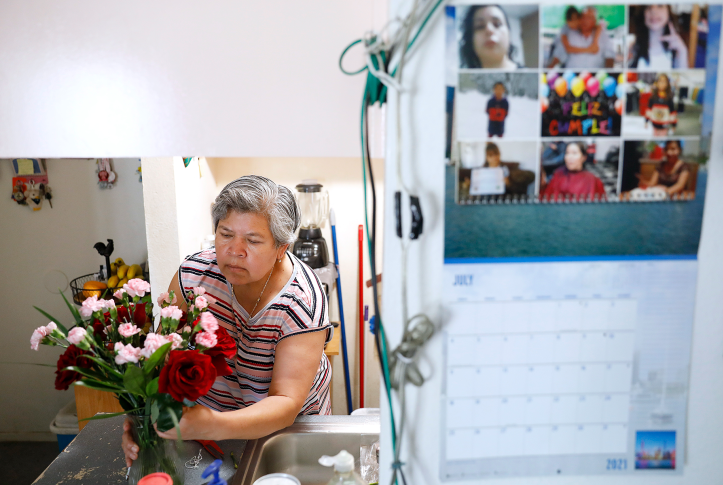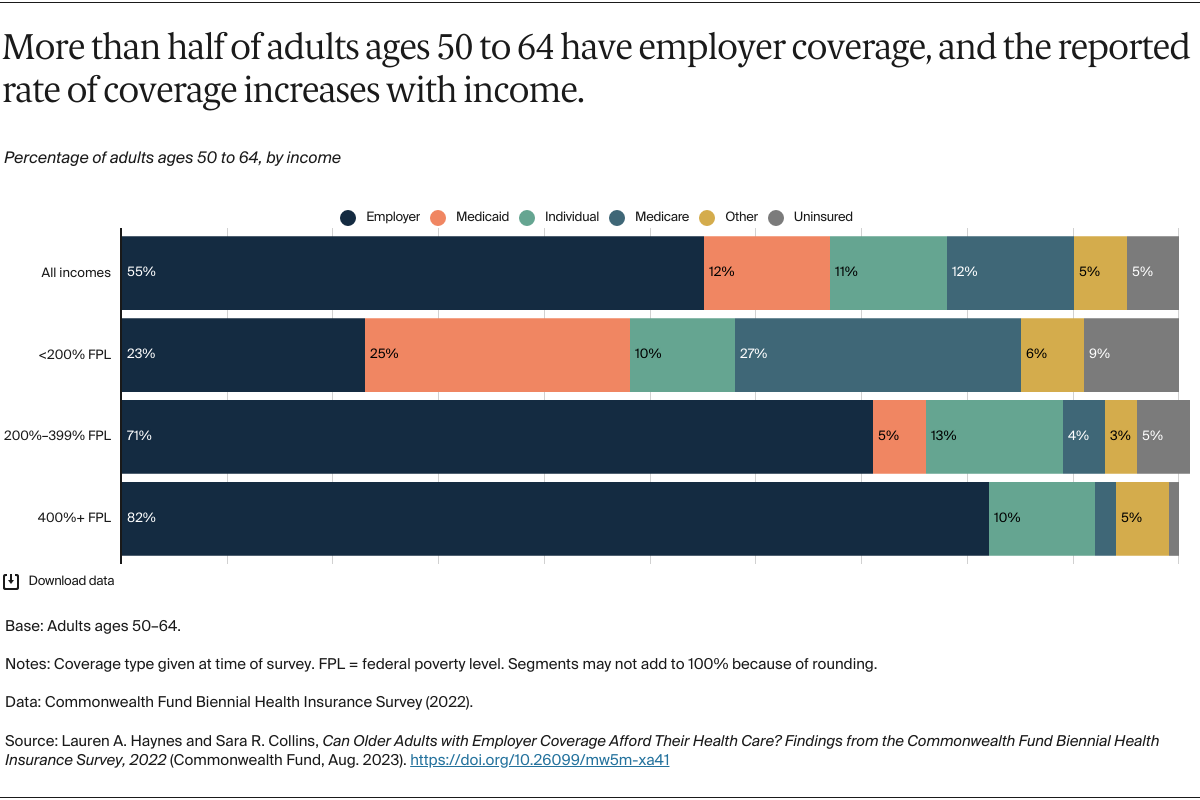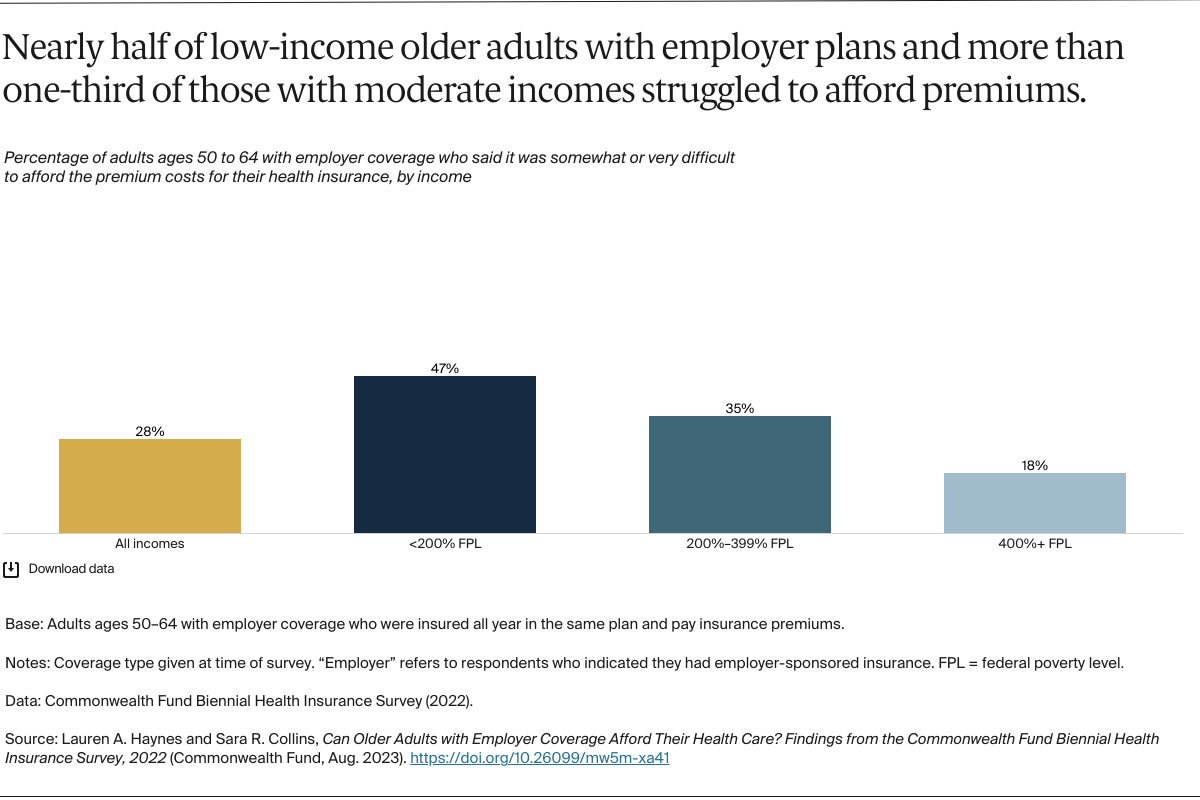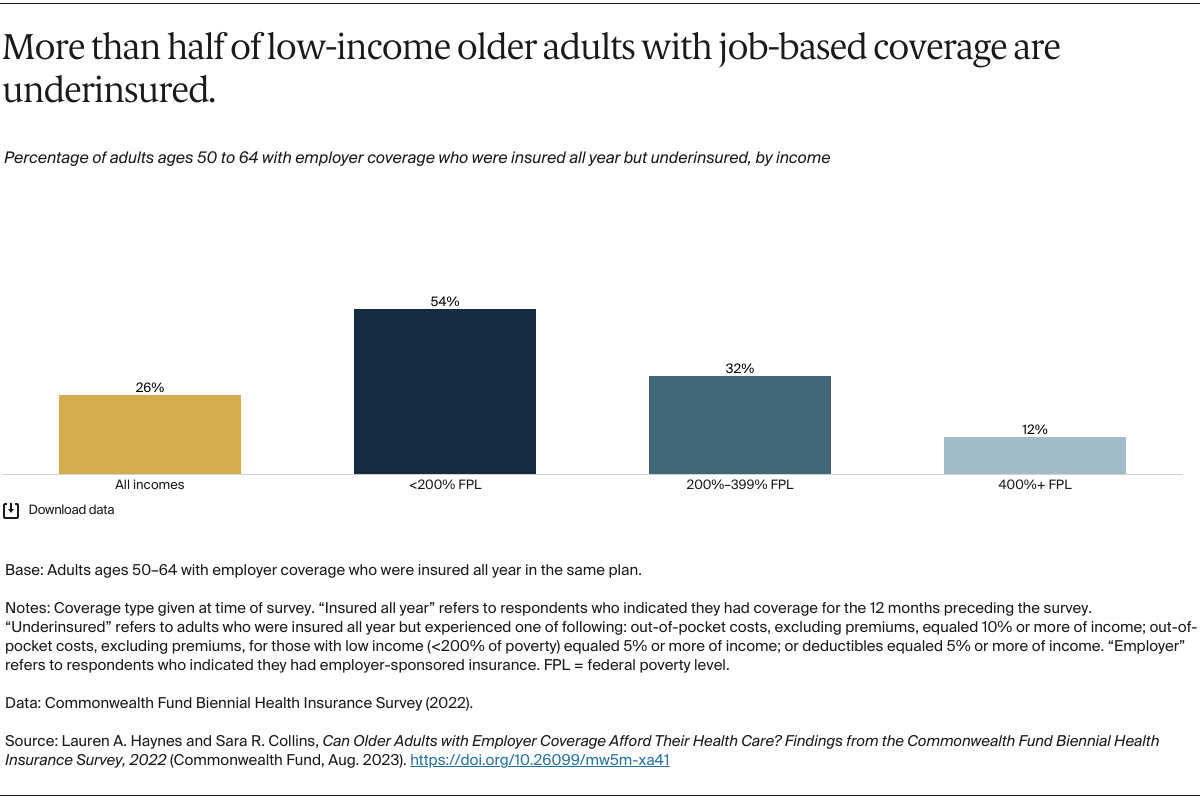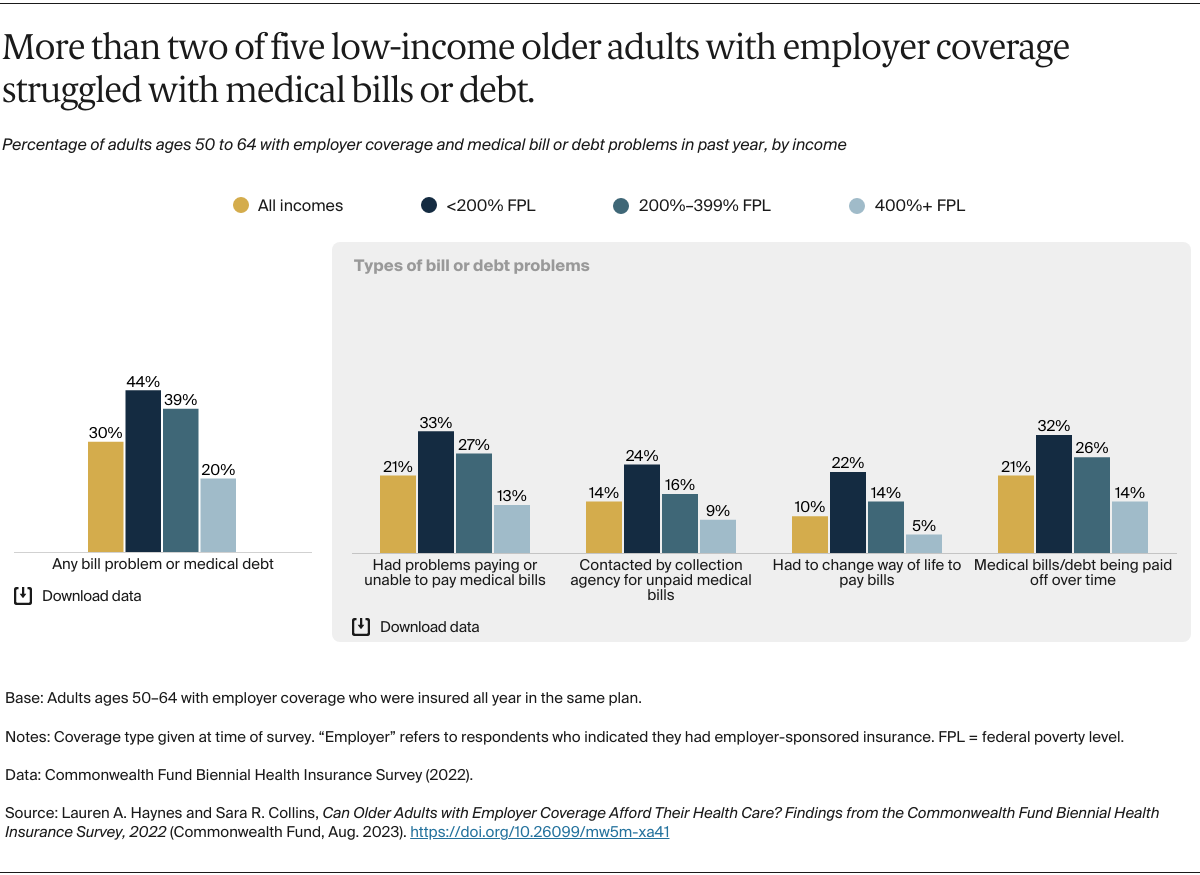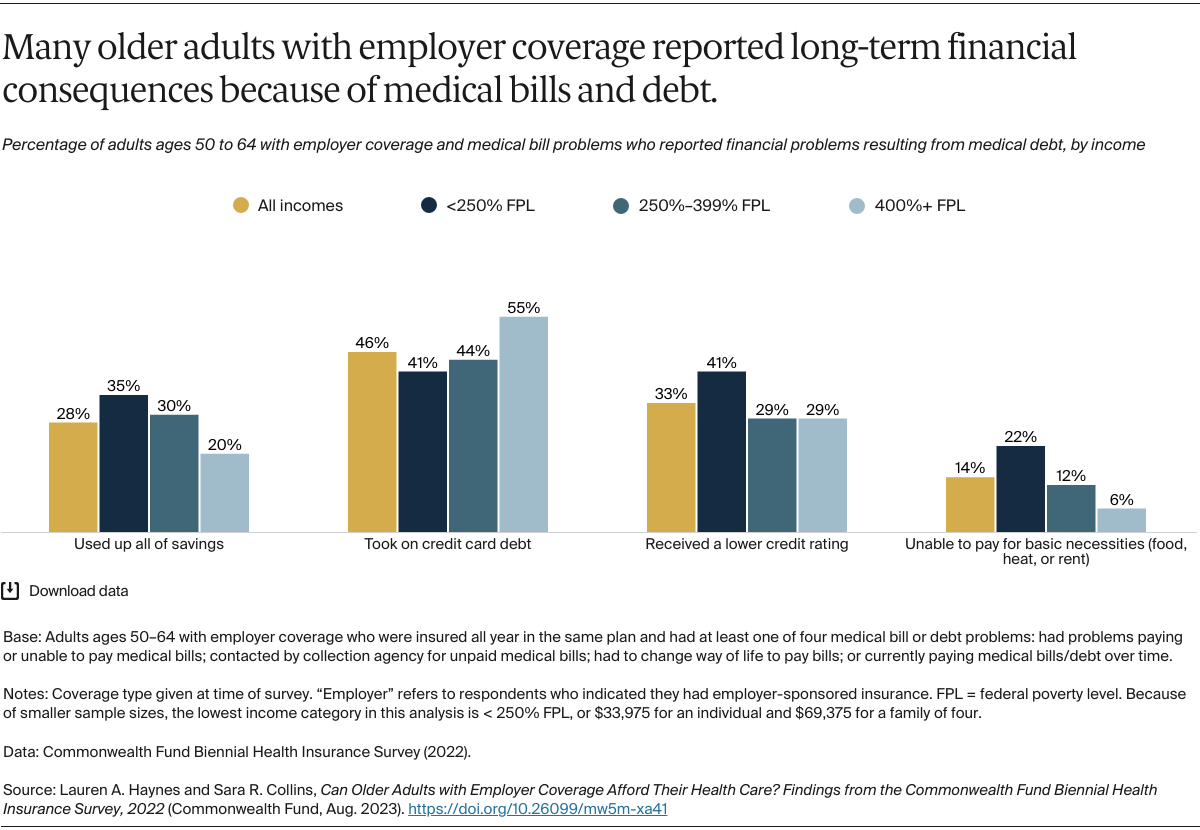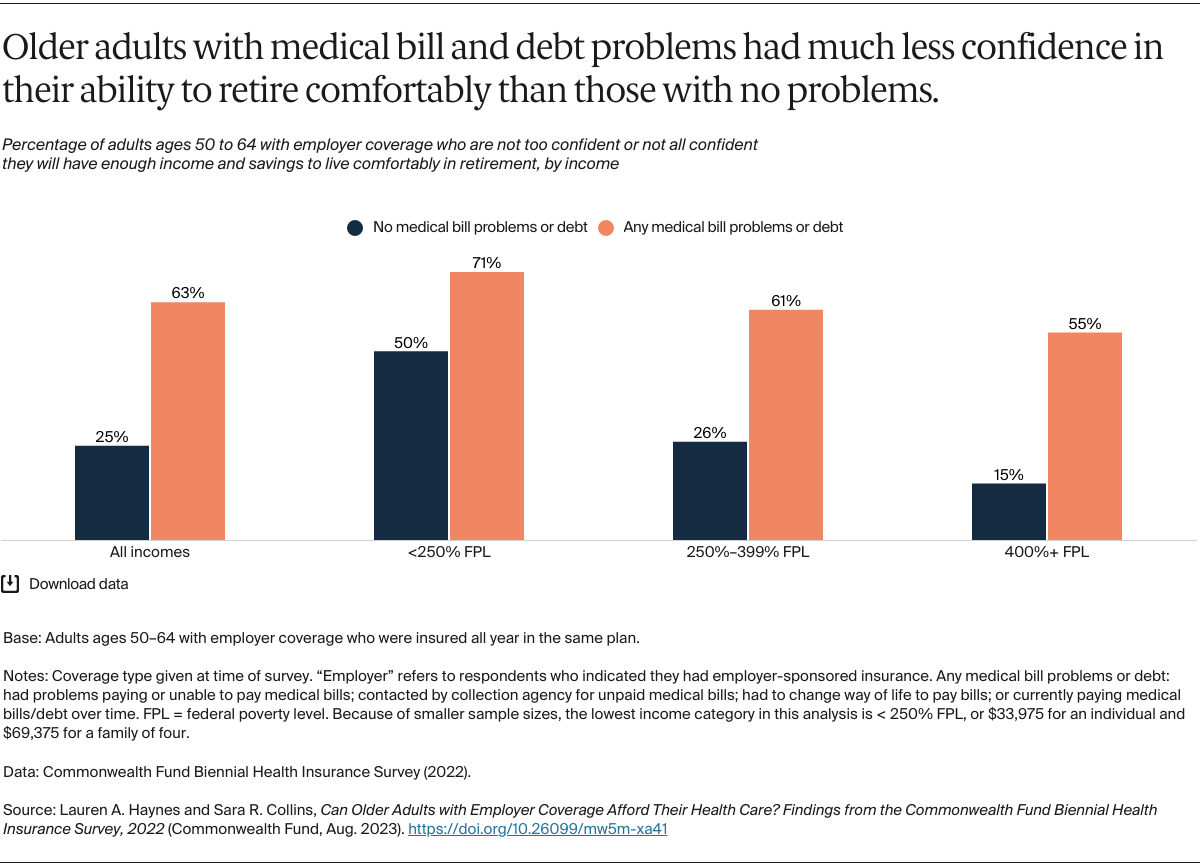Introduction
While people age 50 and older make up a little more than one-third of the U.S. population, they account for more than half of national spending on health care, owing to their higher-than-average health needs.1 Both Medicare and the Affordable Care Act (ACA) have helped protect Americans against the rising risk of catastrophic health care costs as they age — Medicare by providing comprehensive health coverage starting at age 65, and the ACA by preventing insurers from rating people based on health and offering subsidized coverage through Medicaid and the insurance marketplaces for the millions of adults who don’t have access to employer coverage. Together, they have given many older people and their families more certainty that age and retirement won’t rob them of comprehensive health insurance.
Yet little attention has been given to the extent to which employer coverage, which insures more than half of older adults ages 50 to 64, is affordable for this age group and provides timely access to health care. Premiums and deductibles in employer plans have outpaced income growth over the past decade.2 The question is whether employer coverage is providing adequate protection against health care costs for an age group at higher risk of health care expenditures.
In this brief, we use data from the Commonwealth Fund’s 2022 Biennial Health Insurance Survey to examine whether 50-to-64-year-olds with employer coverage find their health plans and their health care affordable. We focus particularly on the experience of older adults with low and moderate income:
- Low income is defined as less than 200 percent of the federal poverty level, or $27,180 for an individual and $55,500 for a family of four in 2022.
- Moderate income is 200 percent to just under 400 percent of poverty, or $54,360 for an individual and $111,000 for a family of four.
The survey research firm SSRS interviewed a nationally representative sample of 8,022 adults age 19 and older between March 28 and July 4, 2022. This analysis focuses on 1,978 respondents ages 50 to 64 years (see “How We Conducted This Survey” to learn more).
